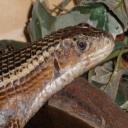Yahoo Answers is shutting down on May 4th, 2021 (Eastern Time) and beginning April 20th, 2021 (Eastern Time) the Yahoo Answers website will be in read-only mode. There will be no changes to other Yahoo properties or services, or your Yahoo account. You can find more information about the Yahoo Answers shutdown and how to download your data on this help page.
Trending News
planning on getting a tortoise?
I would like to get a tortoise nd am an experienced lizard keeper so not a complete novice.
I m looking into making a table about 3x1.5 foot and 6 inch sides with a heat lamp but need to now...
What kind of heat lamp is needed
What other decorations/features would be good
Do tortoises hibernate if keeped indoors
What is a small tortoise that is commonly able to be purchased in UK
What is best to feed them
Any other advice would be great
Thanks
2 Answers
- TPau15Lv 71 decade agoFavorite Answer
Here's a site where you can buy a tort in the UK online:
This is an article from TortoiseTrust.org and contains a site where you can sign up to adopt a tort rather than buy one:
http://www.tortoisetrust.org/articles/uktorts.html
Here's the list of essentials for general tortoise care:
1) The minimum enclosure size for other common tortoises, like the Russian, Hermans, or Greek, is 4ft x 2ft. Tortoises in general, need a lot of floor space and can quickly go stir crazy in a small enclosure.
2) UVB lighting; fixture and bulb. (Zoomed makes the best long tube style fluorescent bulb to date, and T-rex makes the best MVB, or mercury vapor bulb.) MVB's will emit heat and UVB light all form one bulb. Otherwise, UVB and heat will be two separate bulbs. Bulbs should be replaced every year after which time UVB will no longer be produced even if visible light still is. UVB should be available for 10 - 12 hours a day. UVB is used in a diurnal (active during the day) reptile's metabolism, food digestion, and the absorption of calcium in their bodies.
3) Heat lamp; fixture and bulb. Basking temp should be 90 - 95 F, for most tortoise species. Basking temp should be available for 10 - 12 hours a day.
4) Substrate. A few inches of organic potting soil, pet moss, or coconut coir bedding, like Jungle bed or Bed-a-Beast mixed equally with regular children's play sand can be used with most tortoise species; it should be mixed 50/50. Keep lightly moistened and well mixed to maintain humidity at 50%. Compacted, soaked bedding will breed bacteria and fungus.Change substrate monthly. Depending on species, another substrate may be recommended.
5) Diet. Most tortoises are herbivores; they only eat veggies and grasses (some species require more grasses than veggie.) Here's a good site to use for appropriate veggies and nutritional info: http://www.beautifuldragons.503xtreme.com/Nutritio...
Examples of grasses in a tortoise diet include timothy hay, orchard grass, and bermuda grass. You can find these in the small pet section of any pet specialty store. Be sure to soak the grasses to soften them a little as they will be dried and tough to eat.
I personally offer food every day for all my reptiles, and it also depends on the age of the reptile in question. A baby should definitely be fed every day. An adult could be fed every other day or so, if you desired.
6) Calcium supplementation and multivitamin supplementation. Plain calcium is best, as you can feed as often as you want (you can get plain calcium by buying a cuttle bone and shaving it to a powder. You can even leave a cuttle bone in the enclosure for the tortoise to chew on; it helps maintain the beak.) Calcium with vitamin D3 added should only be fed twice a week to prevent D3 overdose. A multivitamin will help to fill in any small gaps in the diet; feed weekly. Sprinkle on food stuffs to feed.
7) Hides. There should be at least two in the enclosure. You can use ones from a pet store, or you can use an old mixing bowl or fake plastic plant planter with a door cut in it and turned upside down.
8) Water dish. It should be large enough for the tortoise to get into, but shallow/not deep enough to completely submerge. Tortoises will often defecate in their water dish, so it is important to keep it fresh and clean. You may never see the tortoise drink, as most tortoises are good at getting water from the food they eat.
If you are keeping indoors, no the tort should not hibernate. Being indoors maintains a constant warmer temp and it is the drop in temp signaling winter and then the cold itself that enables the tort to hibernate.
Source(s): reptile keeper for 12 years - 1 decade ago
If you go to this website it has EVERYTHING you'll need to know about caring for desert tortoises.
http://www.donsdeserttortoises.com/2.html
He has a whole care sheet covering all of your questions and its got alot of other really helpfull notes and information. I hopethis helpss!!!!
P.S: Alot of people are miss led on how to care for desert tortoises correctly so be carefull where you get your info!


